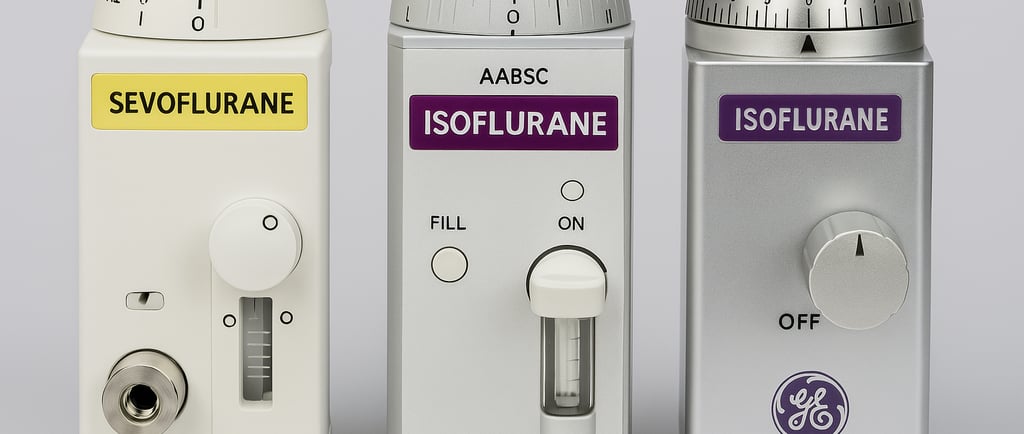An Overview of Anesthetic Vaporizers: Function and Importance
4/6/20251 min read


Introduction to Anesthetic Vaporizers
Anesthetic vaporizers play a crucial role in modern anesthesia, ensuring that patients receive the appropriate levels of anesthetic agents while undergoing surgical and diagnostic procedures. These devices are designed to convert liquid anesthetics into a vaporized form that can be delivered to patients through inhalation, which is essential for maintaining safety and efficacy during surgeries.
How Anesthetic Vaporizers Work
The operating principle of anesthetic vaporizers relies on the creation of a precise gas mixture to facilitate controlled delivery of anesthetic vapors. The apparatus can modulate the concentration of vapor by mixing it with fresh gas flows, allowing for accurate dosing that aligns with the specific needs of the patient. Most vaporizers utilize a specific design known as the "out-of-circle vaporizer," where the vaporized anesthetic is added to the respiratory gas stream that the patient inhales.
Types of Anesthetic Vaporizers
There are several types of anesthetic vaporizers available, each engineered for different applications and substances. The most common category includes the variable bypass vaporizers, which are suitable for inhalation anesthetics such as sevoflurane or isoflurane. Additionally, electronic vaporizers are becoming more prevalent due to their capability to adjust concentrations automatically based on real-time physiological feedback from the patient. Understanding the characteristics and uses of each type is vital for healthcare professionals to ensure optimal patient care and safety.
Furthermore, the maintenance of anesthetic vaporizers is crucial to guarantee their functionality and reliability. Regular checks must be conducted to ensure that these devices are calibrated correctly and operating without leaks, as malfunction could lead to inadequate dosing or exposure to harmful levels of anesthetic agents.
In conclusion, anesthetic vaporizers serve as an integral component in the practice of anesthesia, contributing significantly to the safety and comfort of patients undergoing medical interventions. As technology continues to advance, the development of more sophisticated vaporizers promises to enhance both the efficacy of anesthesia and the overall surgical experience.
